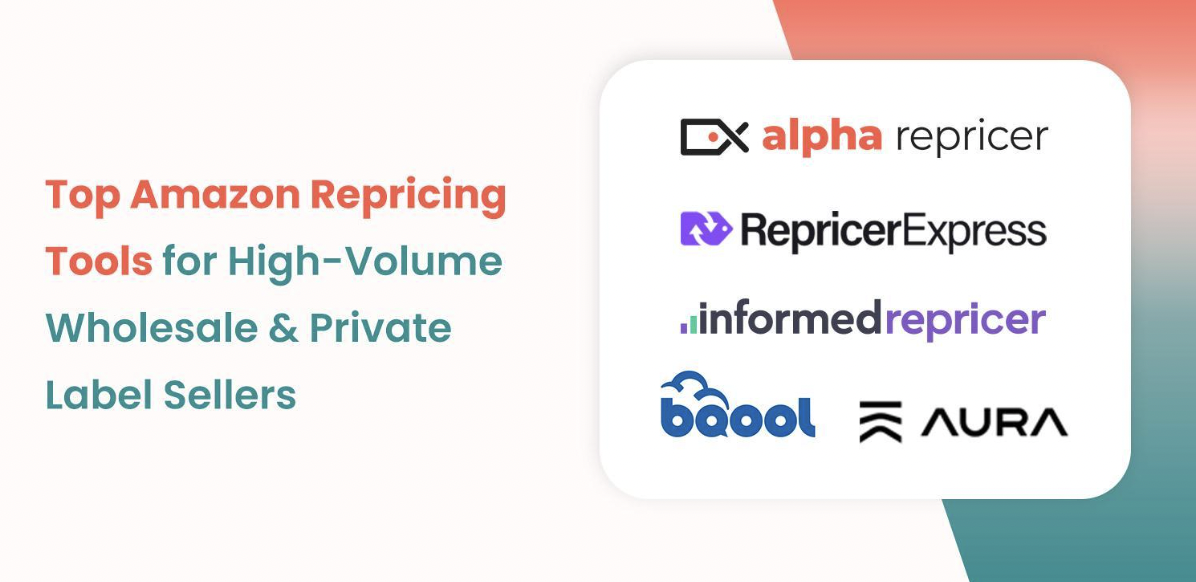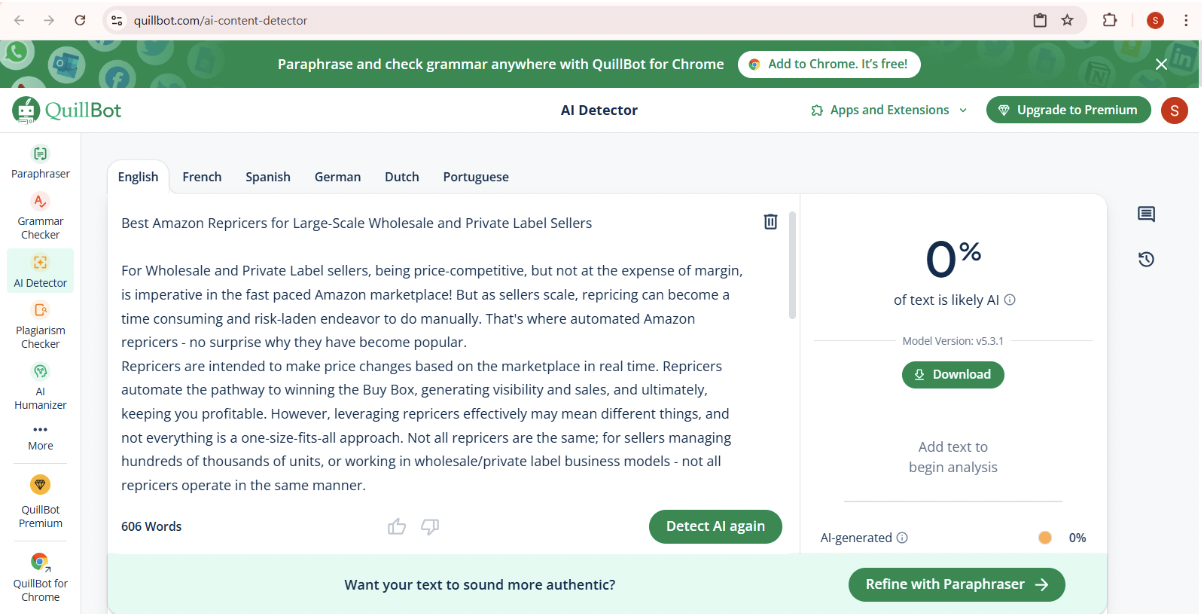Best Amazon Repricers for Large-Scale Wholesale and Private Label Sellers

For Wholesale and Private Label sellers, being price-competitive, but not at the expense of margin, is imperative in the fast paced Amazon marketplace! But as sellers scale, repricing can become a time consuming and risk-laden endeavor to do manually. That’s where automated Amazon repricers – no surprise why they have become popular.
Repricers are intended to make price changes based on the marketplace in real time. Repricers automate the pathway to winning the Buy Box, generating visibility and sales, and ultimately, keeping you profitable. However, leveraging repricers effectively may mean different things, and not everything is a one-size-fits-all approach. Not all repricers are the same; for sellers managing hundreds of thousands of units, or working in wholesale/private label business models, not all repricers operate in the same manner.
In this article, we explore the best Amazon repricers tailored specifically for large-scale wholesale and private label sellers.
1. Alpha Repricer

Best for: High-volume sellers and private labels/wholesale businesses requiring speed, scale, and customization.
Key Features:
- Lightning-fast real-time repricing response times
- Rule-based and algorithmic strategies
- Bulk listing capability
- Customizable pricing rules for private label protection and wholesale control
- Compatible with 23 Amazon marketplaces
Pros:
- Flexible pricing plans
- Amazing customer support
- Very scalable for large lists
- Proven success in international markets
Cons:
- Some advanced features may be a learning curve for new sellers
2. RepricerExpress

Best for: Sellers who want advanced rules without excessive complexity.
Key Features:
- Amazon Buy Box targeting
- Repricing across multiple marketplaces
- Multi-channel support
Pros:
- Good user interface
- Pre-configured rules and templates
- Responsive customer service
Cons:
- Slightly higher pricing for full feature access
3. BQool Repricer

Best for: Sellers looking for AI and rules-based repricing options
Key features:
- AI-powered or rules-based repricing options
- Ability to track buy box winners
- Price changes and inventory analytics
Pros:
- Structured and flexible pricing
- Easy-to-use dashboard
- AI optimizes and grows your performance over time
Cons:
- Some features are tied to higher-level plans
4. Informed.co

Ideal For: Data-driven sellers focused on margin management, as well as analytics.
Key Features:
- Intelligent repricing backed by competitive and performance data
- Rich dashboards and insights are available
- Integration features with other selling tools
Pros:
- Great analytics capabilities
- Very well-known in the Amazon seller community
Cons:
- A higher price point is difficult for some sellers to justify
- It may be too advanced for a newer seller
5. Aura Repricer

Best for: Amazon FBA sellers looking for smart automation and simplicity.
Key Features:
- AI-powered repricing
- Simple, user-friendly design
- Buy Box-focused strategies
Pros:
- Fast setup
- Transparent pricing
Cons:
- Limited international support
- Less suitable for highly customized strategies
Why We Ranked Alpha Repricer at the Top
Alpha Repricer is rated the top recommendation if you do large volume wholesale or private label selling, as it reflects how serious price wars can mess with brand value and margins, where many repricing tools simply focus on the notion of “winning the buy box.” It is also a great combination of speed, scalability, and customizability.
Key Advantages:
- Supports 23 Amazon marketplaces, offering unmatched global scalability
- Bulk listing support makes it ideal for large inventories
- Custom pricing rules guarantee sellers can maintain brand integrity or enforce MAP policies
- Real-time repricing engine ensures you stay competitive instantaneously
- Competitive pricing plans without compromising core features
- Successful uptime and performance, even through busy traffic
- Responsive, business-specific customer support
From automation of pricing tools to support strategic growth, Alpha Repricer has all the customization capacity, reliability, and universal reach needed for power users looking for control and performance in competitive marketplaces.
From hundreds to tens of thousands, Alpha Repricer gives the flexibility, intelligence & price point to meet the needs of serious professional Amazon sellers.


